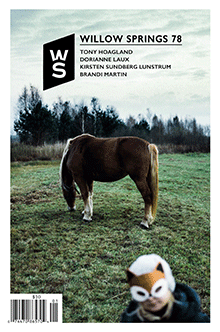
About Kirsten Sundberg Lunstrum
Kirsten Sundberg Lunstrum is the author of two collections of short fiction—This Life She’s Chosen (Chronicle Books, 2005) and Swimming With Strangers (Chronicle Books, 2008). She has been the recipient of a PEN/O. Henry Prize for short fiction and fellowships from the Sewanee Writers’ Conference and the MacDowell colony. She teaches at Purchase College, SUNY and lives with her husband and two young children in the Hudson River Valley.
A Profile of the Author
Notes on “The Remainder Salvaged”
“The Remainder Salvaged” was a long time in the making. Several years ago, my husband’s grandmother (who has been, incidentally, one of my few early-draft readers for over a decade now, and who still—even now that she’s in her 80s—occasionally writes me long, thoughtful, and hand-penned letters analyzing and critiquing my stories) sent me a newspaper clipping of a Wenatchee World article featuring her uncle discussing the anniversary of the Wellington Train Disaster. The disaster happened in 1910 in the Cascades, near the town now known as Tye (then as Wellington). An avalanche swept two Great Northern trains from their tracks, killing 96 people. According to the clipping, my husband’s great-great uncle, who was a young man at the time of the accident, was one of those who received the bodies of the avalanche victims when they were tobogganed into Wenatchee following the accident. I knew I wanted to write about the disaster as soon as I read the article, but it took me years to finally find the right character through which to enter the story. Then, last summer my family and I, home in Washington for our annual summer visit, hiked the site of the avalanche (known as the Iron Goat Trail) along the now-defunct train route. The site struck me as eerie, though we were there on a bright, warm summer day. Pieces of the train wreckage are still there, beneath the layers of overgrown brambles and nettles and undergrowth; and the snow shed the railroad built following the accident is crumbling and scribbled with graffiti. The result of the visit to the disaster site was the emergence of the trio of characters that appear in this story—Nils, Iris, and the sister—and a first scene.
This story diverges from most of my stories in that it is fairly closely based on actual history. I’ve loved reading historical fiction since I was a little girl, but haven’t tried my hand at it as a writer until now. As I wrote this story, I wrestled with how accurate I needed to be about the history, and how clear I needed to be about the specific date of the accident; I made several revisions of the story, sometimes holding to the facts, other times veering far from them. In the end, I think I found some middle ground between fact and fiction, and am happy with the final version of the story.
Notes on Reading
As a reader I tend to favor short stories over novels (though there are plenty of novels I love and find myself turning to again and again as models of prose and structure). My new literary obsession is the work of Anthony Doerr, whose collection Memory Wall won the Story Prize this year. I was completely knocked out by the stories in that collection—especially the title story and one titled “Afterworld.” Both stories are fragmented narratives, and that form, too, is a new obsession. I also recently read Maggie Nelson’s Bluets, and though the book is a hybrid memoir/poem, it has really had an influence on my fiction. In fact, I’ve been reading quite a lot of creative nonfiction in the last year (in part because I taught a nonfiction workshop last fall at Purchase College), and shifting my genre focus as a reader has had the unexpected side effect of rejuvenating my short fiction. I went through a long phase of total fiction burnout following the publication of my second book of stories. I was bored of the standard structure, the standard realism (or, at least, my standard realism), and I needed something to wake me up again to the joy of making fiction. I think my attraction to Nelson’s and Doerr’s books has everything to do with the way both writers are blending and subverting traditional genre limitations and playing with structure, and though it’s not very evident in this particular story, I’m working on doing more of both in the new collection stories I’m currently writing. (And, yep, I’m writing a third collection before finishing a first novel. It’s probably a disaster to say that publicly, but what can I do? Stories are it for me—every new story a perfect challenge—and I don’t think I’ll ever lose my devotion to the short form.)


